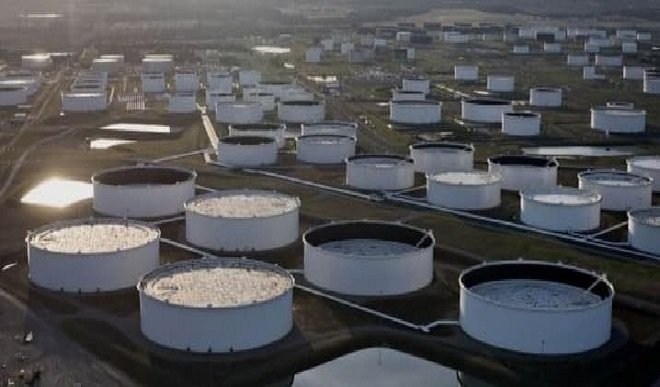Business
Crashing OIL Prices?
Chetna Gupta.
On 8th march, 2020, a price war broke out between Russia and Saudi Arabia when Saudi Arabia, the leader of the OPEC (Organisation of Petroleum Exporting Countries) hiked its oil supplies by large amounts due to which the oil price fell down by 65% to around $33 a barrel. This followed when Russia refused to agree on cutting down the oil supplies in the wake of the COVID-19 pandemic so as to meet the falling prices due to weakening demand. In retaliation, in order to gain the shrinking market share, Saudi Arabia responded by ramping up production and making the oil cheap. Also, the Russia and Saudi Arabia’s uncomfortable relation during the Syrian war was one of the reasons which lead Russia to refuse the agreement. This would also make it difficult for the OPEC members to resolve the war and balance oil prices. But experts say that this price war would be temporary as oil exports are the major source of revenue for these countries and they would revamp the prices and the supplies in order to balance their budget. Also, this wouldn’t benefit India to much extent as India has already been facing a demand slump due to the economic slowdown and the current COVID-19 because of which the fall in prices would not lead to much rise in demand.
Digboi: Asia’s oldest oil field
Such low prices made it difficult for oil producers of different countries such as US who has high costs of production. Shale oil producers in North America generally require oil prices above $40 per barrel to sustain operations and most of them had even set their prices at $65 for 2020 with respect to their costs. Also, cuts in the drilling of new oil fields will suspend the growth of US oil production. With Brent at $25, heavy crude oil producers such as Venezuela, Canada and Mexico wouldn’t be able to cover their base operating cost. The main effect of the price fall is observed in the stock market globally. On 9th March, after the day of the price war break out, the stock markets fell by 7-8%. Dow Jones fell by 7.8% whereas S&P 500 dropped by 7.6%. Italy’s FTSE MIB suffered the largest drop with index falling by 11%. On 21st April, after the oil price turned negative, NIFTY went down by 3.03% and SENSEX by 3.20%. Overall, more than 1100 stocks were in the red as against 409 that gained. India’s quarter 4 profits were likely to dip by 25%. The rupee depreciated to 76.83 against dollars.
The worldwide lockdown due to rising COVID-19 cases has put vehicular transportation to a standstill. All trains, flights and other transport services are suspended. Social distancing had led people to stay indoors and avoid travelling. All this, along with suspended economic activity has reduced the global demand for crude oil drastically. The demand for crude was expected to fall by 27 million barrels a day in April. According to the data until 10th April, below are the countries showing how oil consumption is affected there:
US: US oil demand fell to 14.4 million barrels a day which is a drop of more than 30% from the pre-crisis levels.
India: It is the third largest consumer of crude oil globally and the demand fell by 70% due to lockdown i.e. 3.1 million barrels a day of lost oil demand.
Canada: It surpassed supply shuts of 1.1 million barrels a day.
Saudi Arabia bans death penalty for minors, after doing away with flogging
Spain: The oil demand fell by 23% in March. The demand for air fuel, road fuel and kerosene required for aviation sector fell by 35.5%, 26.5% and 42.5% respectively.
UK: Sales of gasoline and diesel fell by 66% and 57% respectively.
Such falling demand and rising supplies created a problem of plenty for oil producers across the world i.e. there came a major problem of storing of excess crude. Freight rates of super tankers for storing oil were rising as traders were scrambling to get their excess crude stored. The storage tanks for WTI were getting full and it became difficult to find space due to which barely any buyers are willing to take delivery of oil barrels as there is no place to put the crude. Many traders are willing to give away their oil free of cost or even by paying the buyers so as to get rid of the excess crude. The US energy hub at Cushing, Oklahoma was about 72% full as of April 10. Thus, on 20th April, we saw the price of oil turning negative for the first time in history. The price of a barrel of benchmark US oil plunged below $0 a barrel. May US crude futures plunged to a depth never seen before, settling at minus $37.63 a barrel, a decline of some 305% or $55.90 a barrel. This happened when traders fled from the expiring May US oil futures contract, sending the contract into negative territory. Crude oil future contracts are contracts where buyers and sellers of oil agree to deliver a specific quantity of crude oil on a specific date in future at a specific price. One crude oil contract generally represents 1000 barrels of crude oil and an oil future contract can be closed by either taking the physical delivery of the oil or by settling the contract by selling it to another buyer in exchange for money. Each region has a different price marker for its traded crude oil, for example, West Texas Intermediate (WTI), traded on the NYMEX exchange indicates the price of crude oil produced from US oil fields. On 20th April, the WTI May-dated future contracts closed as sellers wanted to close the contract at whichever price possible. In this case, the sellers were offering money to buyers to purchase the oil due to limited storage capacity in the region. This is the reason why prices turned negative on that day. The next day i.e. 21st April when the contract expired, it settled at minus $2.58 per barrel. The June contract settled down 16% to $20.43 a barrel.
Thus, we saw the main reason for the falling oil prices is the falling demand due to COVID-19 and rising supply due to Russia- Saudi oil price war. OPEC and other countries even agreed to cut their production by 9.7 million barrels which is far less than the demand fall which is by 29 million barrels due to which it won’t create much impact. Also, this price fall is estimated to be temporary as Saudi Arabia itself needs the price at $80 per barrel in order to balance its budget.

















